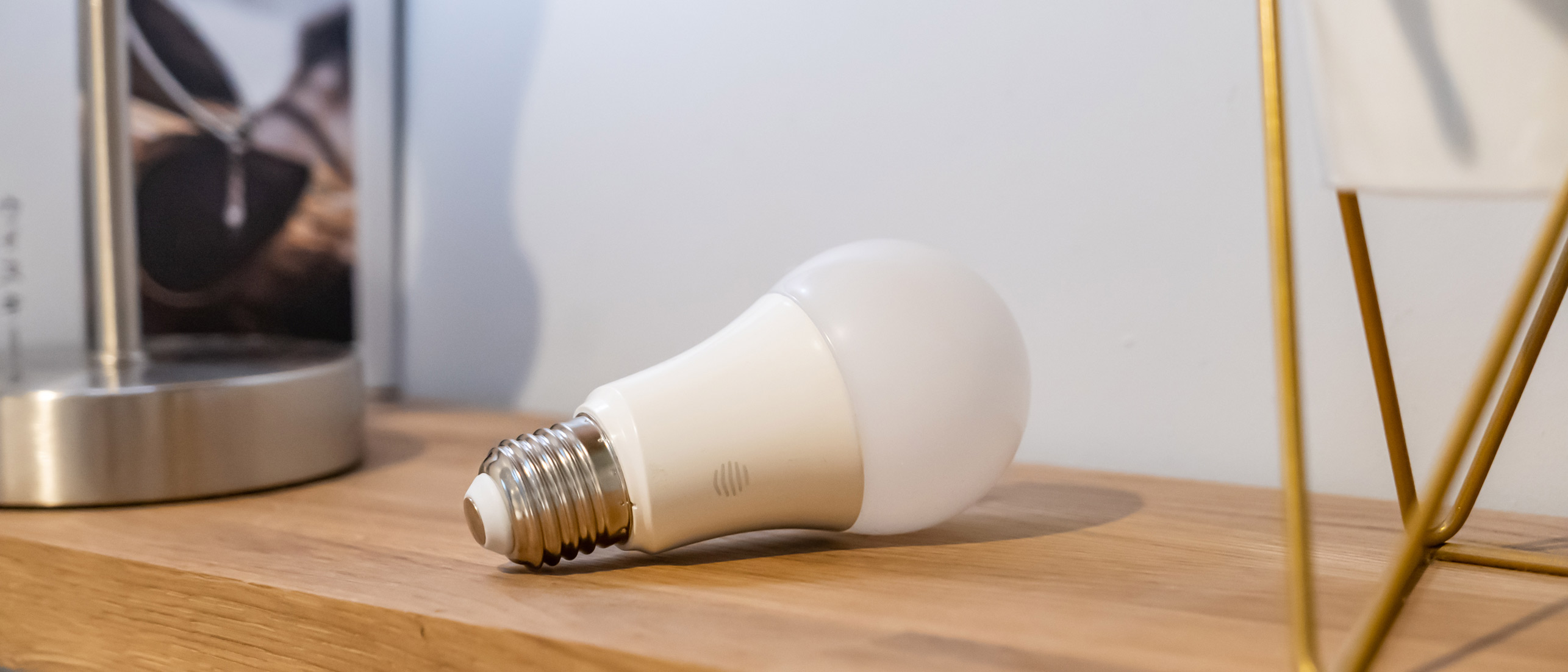TechRadar Verdict
Hive smart light bulbs work much like many others, but together with the (required) Hive Hub create a system that is especially well-suited to those who are new to smart home construction. A good range of bulb types and fitments are available, and we especially like how easily the system can be integrated with voice assistants like Alexa and Siri, and other smart home platforms like Apple HomeKit and IFTTT.
Pros
- +
Easy setup
- +
Competitive bulb prices
- +
Broad smart home integration
Cons
- -
Requires £80 Hive Hub
- -
Limited bulb selection
- -
No outdoor options
Why you can trust TechRadar
One-minute review
Hive smart light bulbs come in a range of specifications, slightly underprice rivals from market leader Philips Hue and take just a couple of minutes to set up. Designed to work with the Hive smart home ecosystem including the Hive Active Heating 2 and the Hive Active Smart Plug, the full-colour bulb tested here can be tuned to any shade and also features adjustable temperature and brightness, but is it a contender for one of the best smart lights you can buy right now?.
The Hive app features integration with a wide range of smart home systems, including Alexa, Google Assistant and Apple HomeKit. It’s also easy to create automations, making the bulb work in conjunction with other Hive devices, and there’s a function called Mimic, where the bulb switches on and off to make your home look like it is occupied.
Hive sells smart bulbs with E27 and B22 fittings, plus E14 teardrop bulbs and GU10 spotlights. These bulbs are available in three versions: dimmable, cool-to-warm, and colour changing. Prices range from £19 to £44 for individual bulbs, and there are discounts for packs of two, three, five, six and 10 bulbs.
As with all other Hive products, the bulbs require the £80 Hive Hub, which attaches to your router with an Ethernet cable, to function. If you don’t already have a hub, this adds a fairly substantial initial outlay to anyone starting to build their first smart light system. This isn’t unheard of in the industry – Philips Hue requires a hub too – but could be a hurdle for those on a tight budget.
Hive Smart Light Bulb price and availability
- RRP: £44
Hive sells a wide range of smart light bulbs, from dimmable entry-level options through to colour changing, each offered in several different fittings. We tested the top-of-the-range full-colour bulb, which comes in both Edison Screw and Bayonet fittings and is priced at £44 and available from Hive directly, as well as online retailers such as Amazon in the UK.
However, prices start from £15 for a single, dimmable GU10 spotlight. As of 31 December 2019, Hive products and services are no longer officially available in the US, although some retailers still have stock but this won’t last forever.
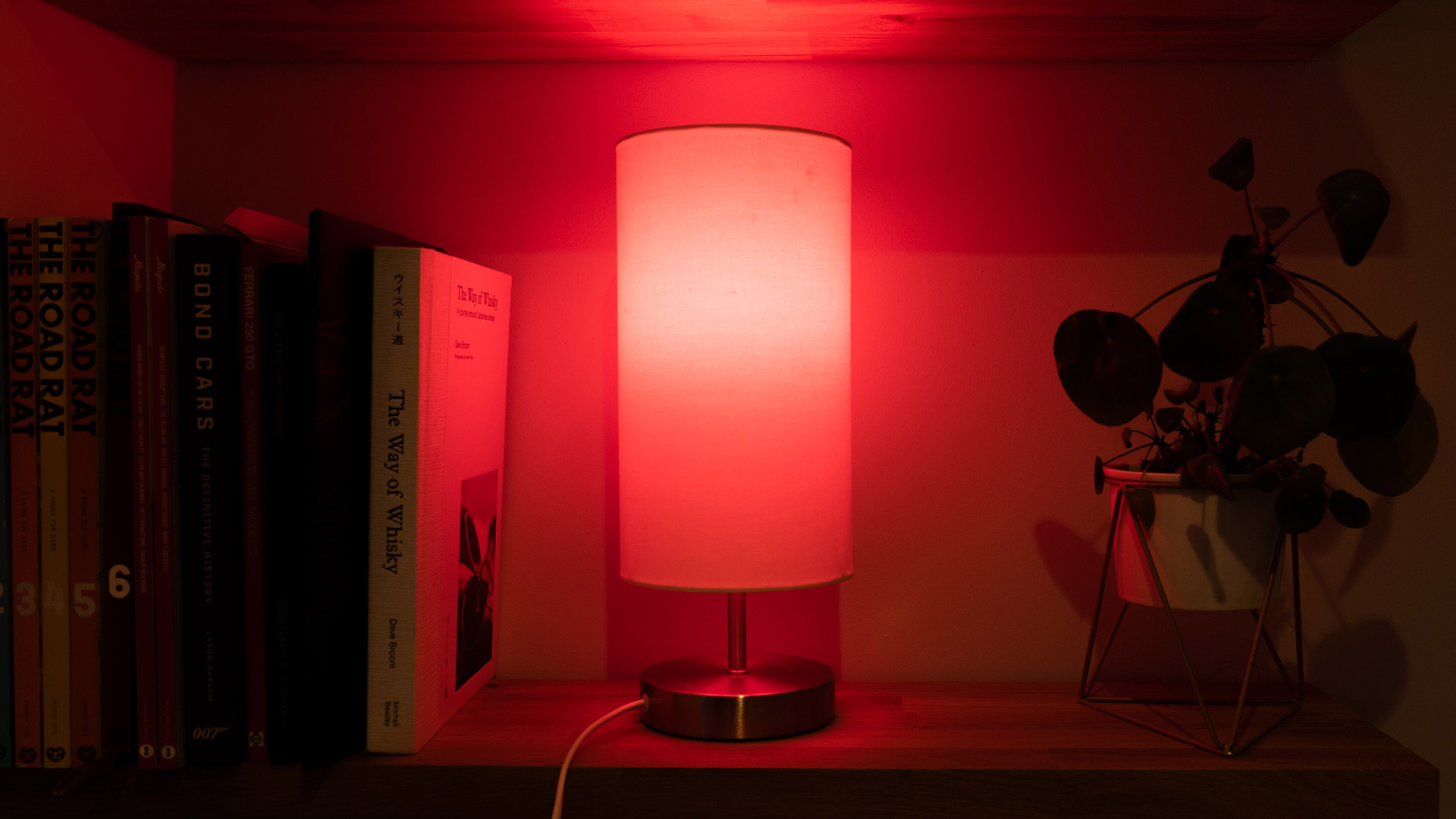
Design
- E27 screw and B22 bayonet fittings available
- Looks and feels just like a regular bulb, only heavier
- Extra weight could unbalance more sensitive anglepoise-style lamps
It’s…a light bulb. Like most other smart bulbs, Hive’s stick to the traditional size, shape, and fitment used by regular bulbs. For this review, we’re looking specifically at the full-colour version of the E27 screw fitment bulb.
Like other smart bulbs, Hive’s are heavier than the non-smart equivalent. This isn’t a problem most of the time, but can unbalance adjustable lamps, like anglepoise-style lamps that use springs and hinged arms to balance.
Hive also sells GU10 spot lights, commonly used in large numbers across the ceilings of newer homes, and teardrop-shaped E14 bulbs. Unlike some rivals, Hive doesn’t sell more decorative bulbs, like the edison-style bulbs of Philips Hue, or the illuminated wall art by Nanoleaf, and nor are its bulbs suitable for outdoor use.
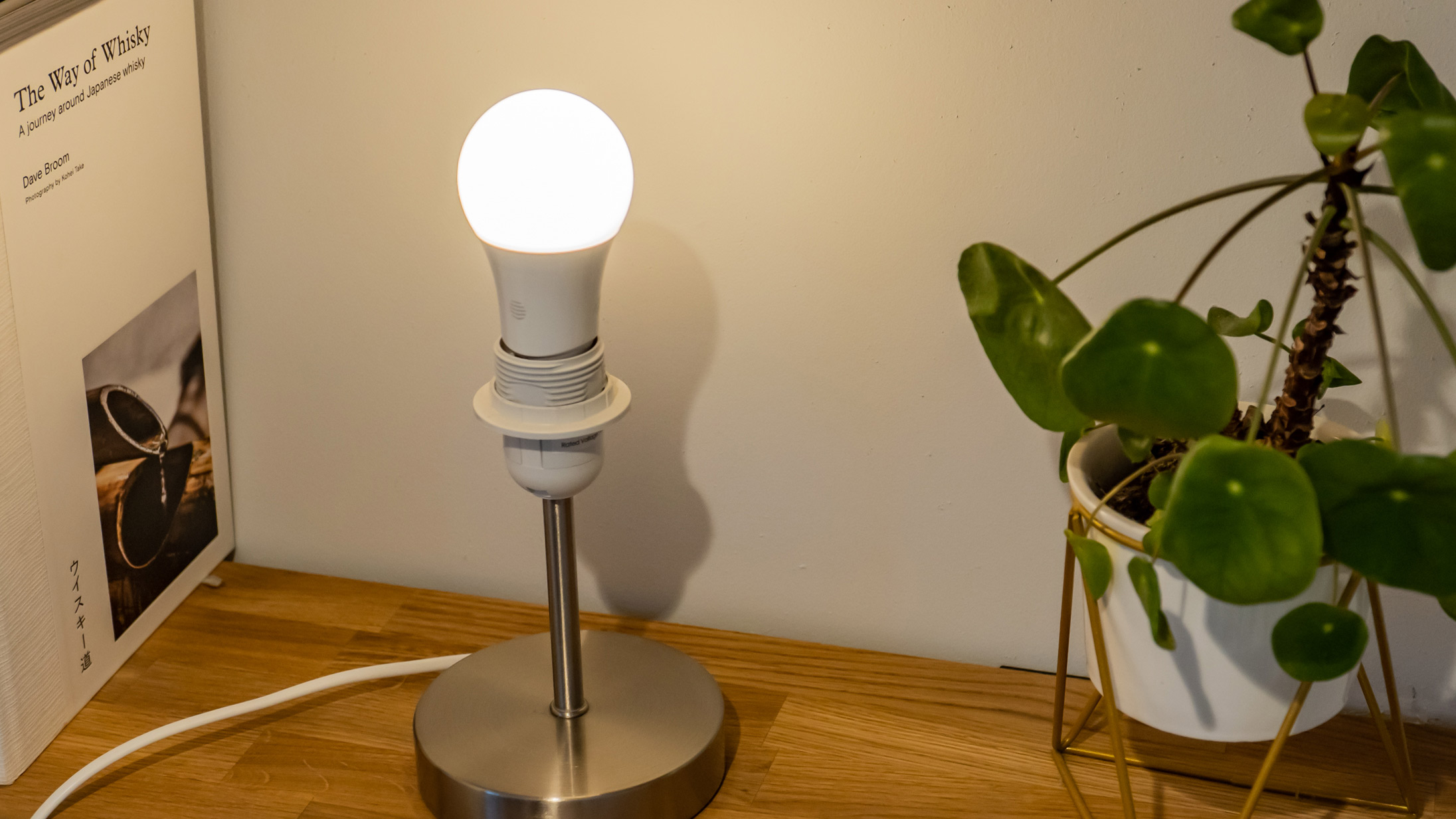
Performance
- Instantaneous app control
- 806 lumens brightness
- 25,000 hours of life
Setup is quick and simple, especially if you already have a Hive Hub attached to your router with an Ethernet cable. Once added to your existing Hive system the bulb responds almost instantly to your commands through the app.
The bulb is equally as quick to react when speaking to voice assistants like Alexa and Siri, with it turning on and off as soon as we issue the command. Even when away from home (or rather, with our phone’s Wi-Fi switched off to simulate being away from home), the bulb responds within two seconds of us speaking to the voice assistants.
All three versions of the Hive E27 and B22 bulbs have a claimed brightness of 806 lumens, which is the same as regular smart bulbs from Philips Hue. However, Hue bulbs can also be bought (at a higher price) with 1,100 and even 1,600 lumens of brightness. The estimated 25,000-hour lifetime for Hive bulbs is the same as those from Philips Hue. This equates to a little over 13.5 years when illuminated for five hours per day.
Speaking of Hue, those bulbs can be added to the Hive app (as long as you also have a Hue Bridge) to create a more diverse lighting system.
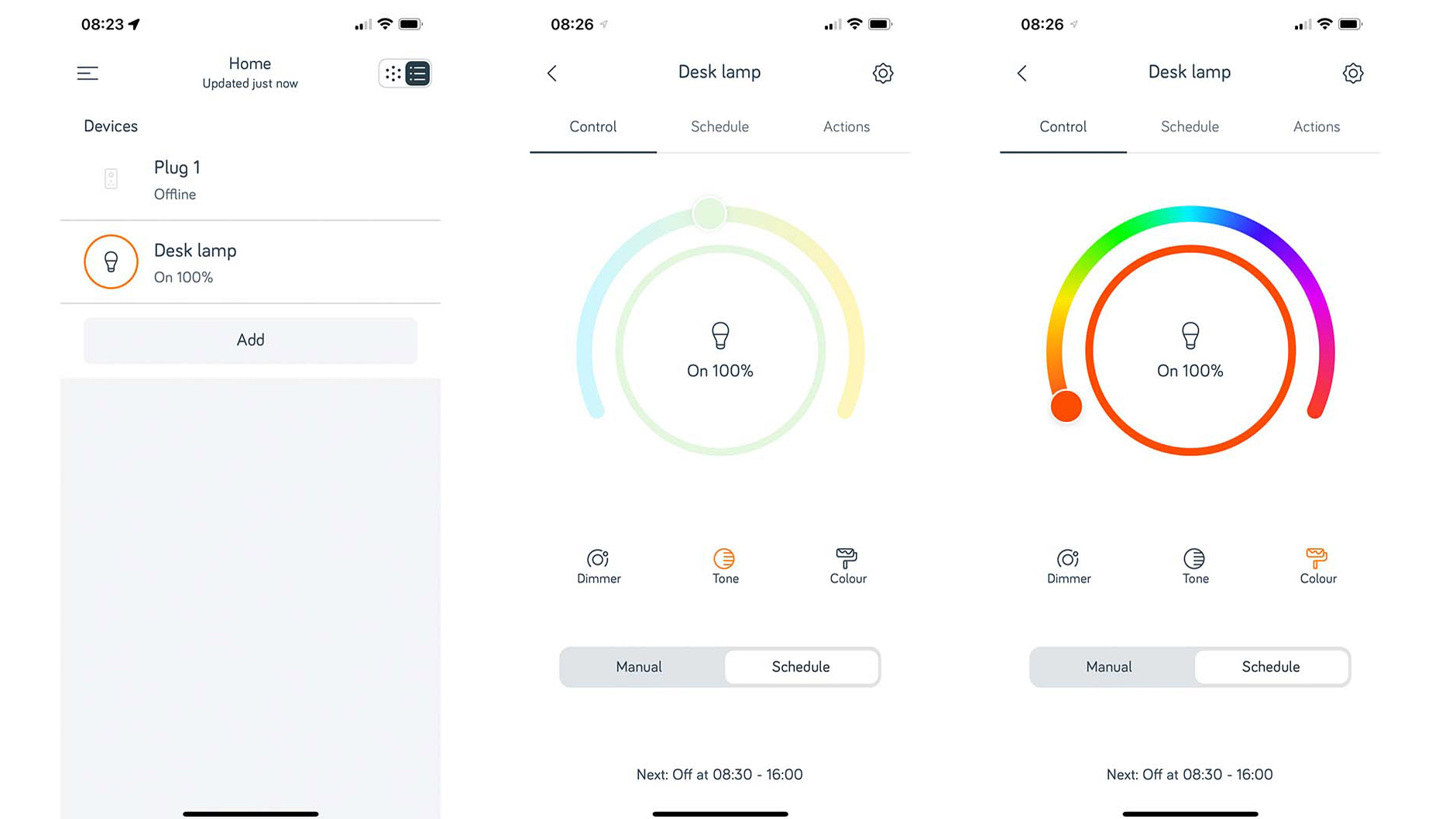
App
- Quick and easy to set up
- Responsive
- Easy to add bulb to other smart home systems
The Hive app is one of the more intuitive ways to set up and control a smart home. It is neatly laid out and uses language that makes it easy for everyone to understand what’s going on, even for those entirely new to smart home products.
The bulb was automatically recognised by our Hive Hub, and adding it to our existing system took just a few seconds. After that, users are invited to assign the bulb to a room and name it. That way, you can control it by asking a voice assistant to turn a certain room of light on and off, or adjust the one bulb to s specific brightest, colour or temperature.
Integrating your Hive system with Alexa, Siri, and Google Assistant is easy, with the process started within the Hive app. Follow the on-screen prompts and you’ll be able to control the bulb by speaking to your assistant of choice. In our testing, both Alexa and Siri were quick to set up and worked equally well.
The app can be used to control the bulb directly, set up a schedule for each day of the week – a schedule so detailed that the exact brightness and temperature or colour can be set for each 15-minute slot of the entire day. Actions, Hive’s term for home automations, can be created too, where bulbs work in conjunction with other Hive devices. For example, a light can be set to come on when a door (with a Hive door or window sensor attached) is opened.
Lastly, the app has a mode called Mimic. When enabled, this turns your Hive lights on and off in a pattern that simulates your home being occupied, in a bid to deter potential burglars. You can choose which bulbs are included in the Mimic system, and schedule it to turn on and off at times of your choice. However, this is a one-day schedule only and you can’t set Mimic to work at different times on each day of the week.
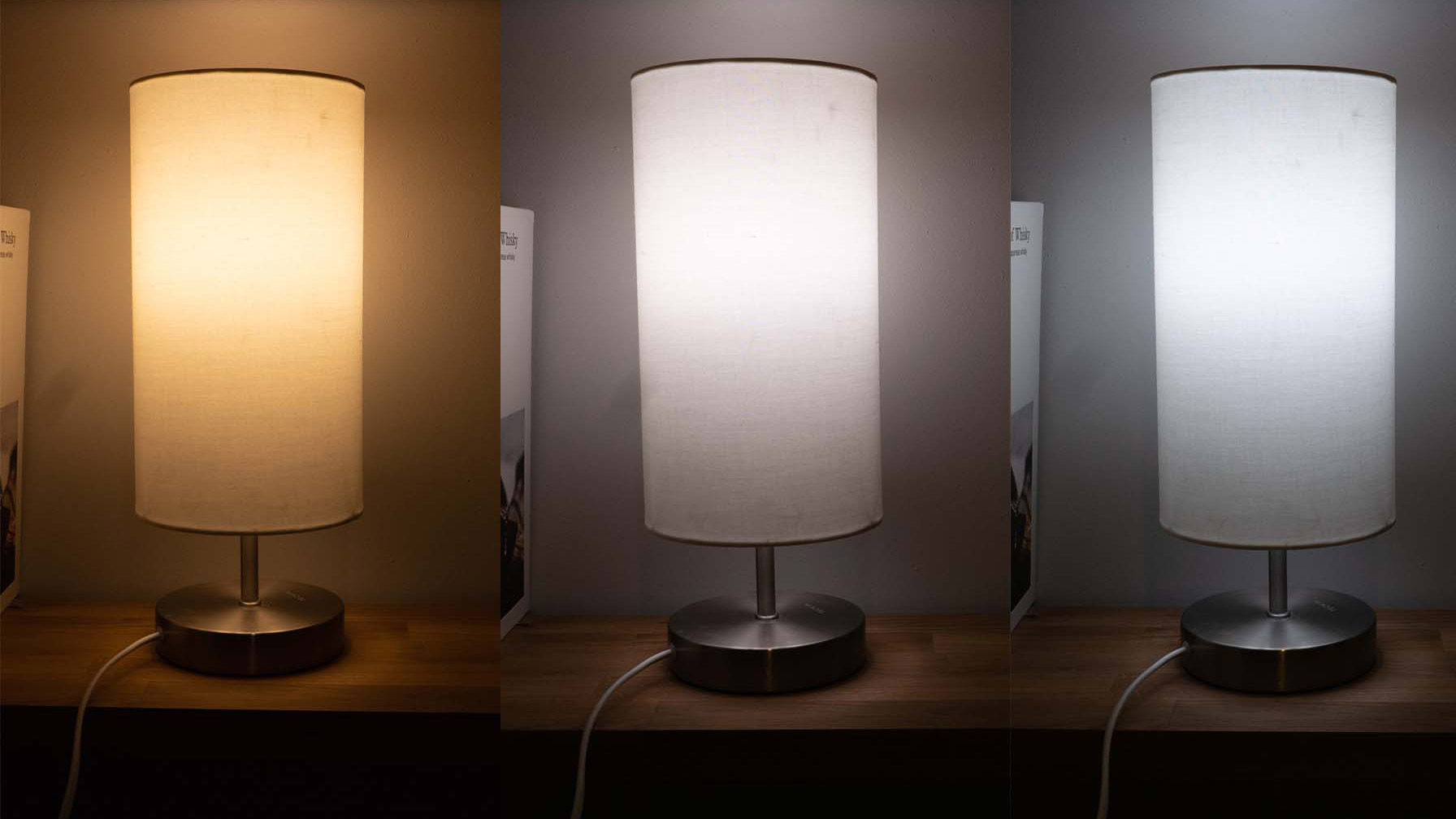
Should I buy the Hive Smart Light Bulb?
Buy it if...
You already have a Hive Hub
Already own the £80 Hive Hub? In that case building a Hive smart lighting system costs broadly the same as those from the likes of Philips Hue, with prices starting at £15 and rising to £44 for the colour bulb reviewed here.
You are yet to buy any other smart bulbs
If you are new to smart lighting, Hive is a good place to start. The hub isn’t cheap, but forms a good foundation on which to build out a useful and multifaceted smart home automation system.
You want good integration with other systems
We particularly like how easy it is to hand over control of Hive smart lighting to voice assistants like Alexa and Siri, and integrate the bulbs with other systems, including IFTTT and Apple HomeKit. All this is accessible from within the well-designed Hive app.
Don't buy it if...
You want access to a broader range of bulbs
Hive currently offers only three physical types of bulb. Its catalogue lacks trendy Edison-style bulbs and also fails to include bulbs suitable for use outdoors. We’d also like to see LED light strips too. That said, Philips Hue lights can be added to the Hive app, creating a more diverse system.
You use Samsung SmartThings
The only major smart home system not compatible with Hive devices is Samsung SmartThings. If you already have the foundations of a SmartThings system, you’ll want to look elsewhere.
You are on a tight budget
Building a Hive system from scratch can be expensive, especially when the £80 hub and £44 colour bulbs are taken into account.
First reviewed: January 2022
- Check out these great smart home device deals
Alistair Charlton is based in London and has worked as a freelance technology and automotive journalist for over a decade. A lifelong tech enthusiast, Alistair has written extensively about dash cams and robotic vacuum cleaners for TechRadar, among other products. As well as TechRadar, he also writes for Wired, T3, Forbes, The Independent, Digital Camera World and Grand Designs Magazine, among others.
